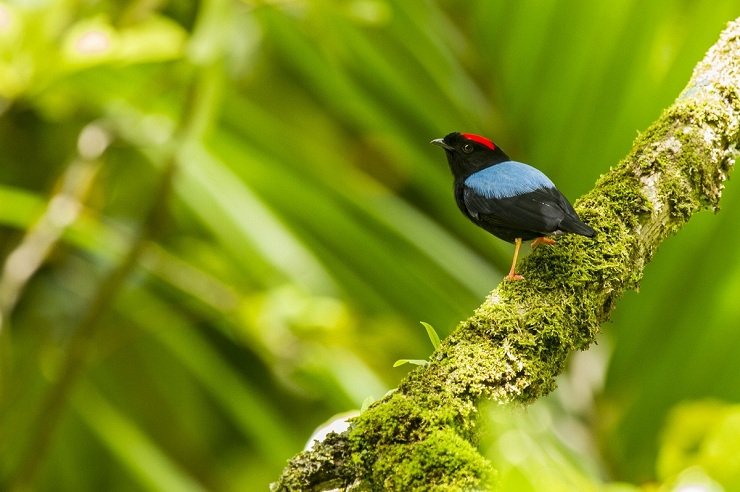
Birding in Trinidad and Tobago has been likened to an introductory chapter in the book of birding in the Neotropics. And for good reason. While the 480-odd species recorded within T&T may outstrip our fellow Caribbean islands by leaps and bounds, it pales in comparison to the massive lists of mainland South and Central America. T&T boasts a fascinating level of biodiversity, however the relatively small size of the islands puts a limit on individual species diversity.
What this translates to is an array of bird families that are very similar to that on the mainland – motmots, toucans, jacamars, and antpittas to name a few – but each family is limited to one or two representatives. There is simply not enough real estate for multiple species of toucans for example. Smaller birds are a bit different, and today I decided to touch on the enigmatic and emblematic manakins.
T&T has three resident species of manakins. It may seem as if this may be contrary to the previous paragraph, but let me explain further. Each of the three belongs to a separate genus within the family and as such occupies a different position within the forest. Not only do they differ in terms of looks, but also vocalizations as well as what they’re most renowned for – dance moves.
The largest of the three is the Blue-backed Manakin found in the rainforests of Tobago. This chunky manakin has a fascinating repertoire of calls, most often heard is a singular, thick and short whistle. When more birds get together, activity intensifies. At their lek, up to six males would get together and leapfrog over each other on a single branch – I can’t accurately describe the whole process in words and give the experience justice so here’s a video so you can see for yourself.

Blue-backed Manakin
The “popular” manakin in T&T is undoubtedly the White-bearded Manakin. With a lek in an accessible location at the Asa Wright Nature Centre, most guests are treated to a show throughout the year. These striking black and white birds use vertical branches unlike the horizontal branches used by the Blue-backed Manakins. Again, here’s a video of this precise lek.
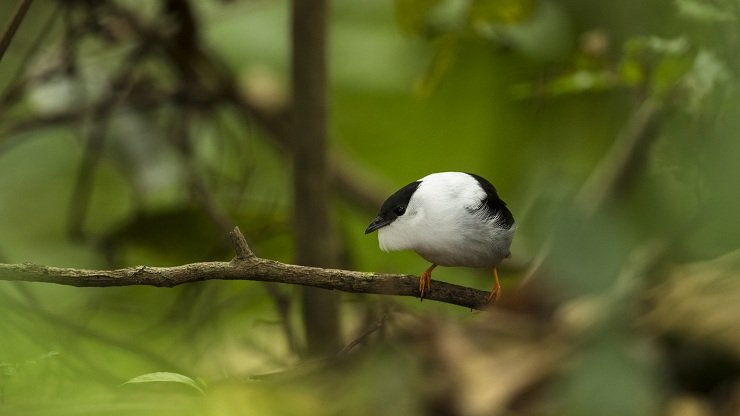
White-bearded Manakin
Golden-headed Manakins, being the smallest of the three tend to stick to the forest canopy. It is at these heights where they perform their dances, out of sight of most. They do not leapfrog like the Blue-backed nor do they snap their wings like the White-bearded. These small birds pull out all the stops on the dancefloor. With lightning quick feet, Golden-headed Manakins seem to teleport on and off a branch. They also slide along branches much like the closely related Red-capped Manakin. When the attending female does take a closer look, her gaze is returned with pupils that oscillate between large and tiny. Here’s another video from Asa Wright, the tree these Golden-headed Manakins used to lek within has since fallen – the birds have presumably found a new lekking tree elsewhere.
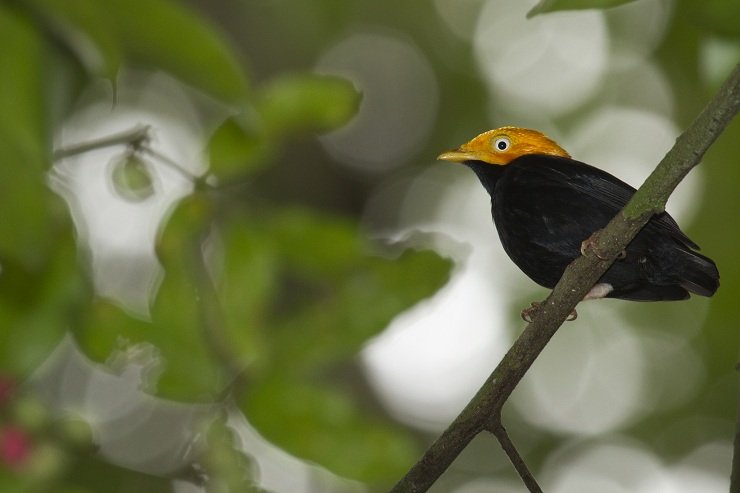
Golden-headed Manakin
Of course, I could not mention the resplendent male manakins and not share some images of their sultry mates who are ultimately responsible for all the elaborate rituals!
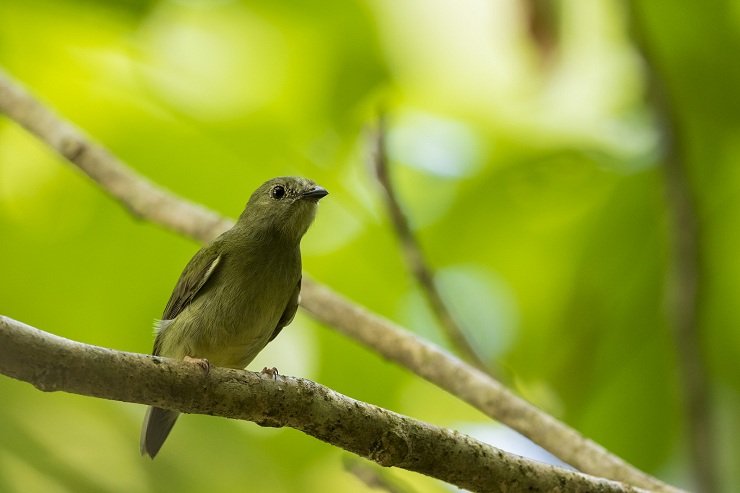
Blue-backed Manakin
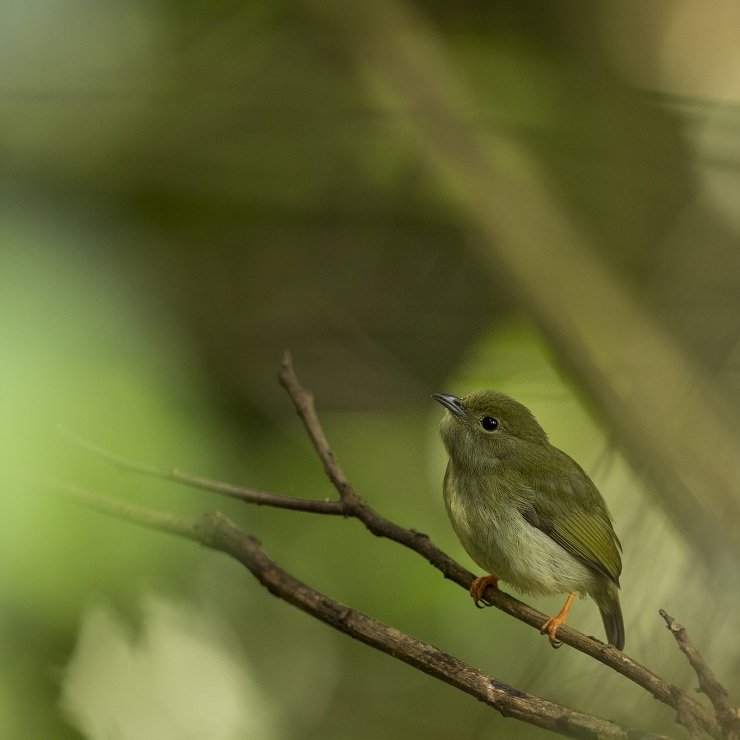
White-bearded Manakin
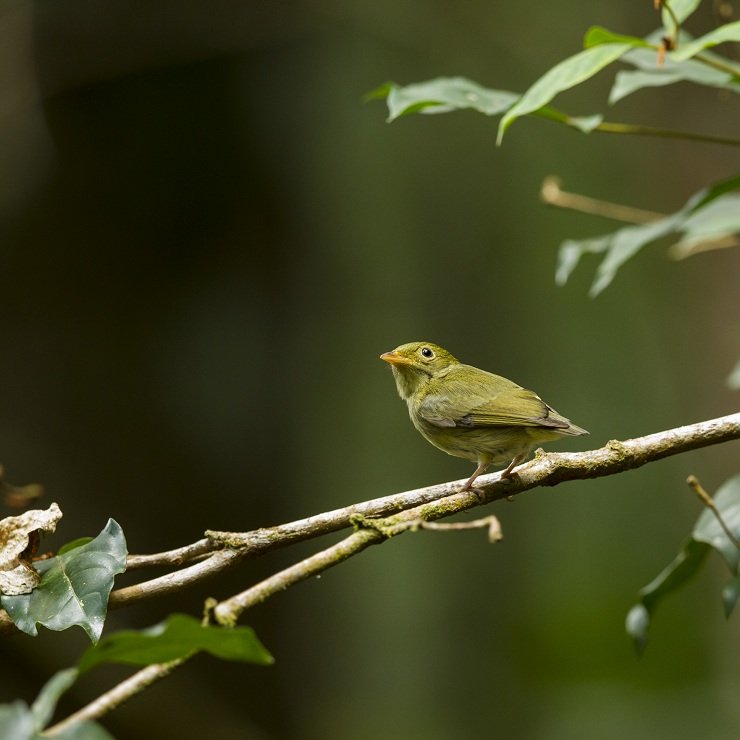
Golden-headed Manakin













Leave a Comment